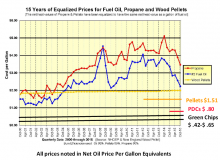Renewables
Next Generation Energy Efficiency
Utility of the Future… EM&V 2.0… Zero Energy… duck curve! Today’s energy challenges encompass topics far beyond the “bread and butter” of energy efficiency in buildings. After more than 25 years of successful energy efficiency programs, states in the NESEA region are addressing the need to move beyond the traditional energy efficiency model and meet today’s challenges.
Harnessing Energy Storage to Meet New England's Energy Challenges
Energy storage systems can provide multiple benefits and related revenue streams to residential and commercial ratepayers but business, finance, and ownership models are still emerging. But while most acknowledge that the benefits of storage can outweigh its costs, not every market allows for storage owners to capture its full value
Getting Real About Renewables: Passive House and the Future of Energy
The growth of renewable energy is a hopeful and positive sign for society. It is not merely a fuel switch, however; it is a disruptive technology that is revolutionizing the fundamental economics of the grid itself. As fossil-fuel “storage” is supplanted by intermittent renewable energy, peak load is transitioning from demand-driven to supply-driven, and shifting the focus from “energy” to “power."
Five Market Trends That Are Re-Shaping C&I Energy Management
Commercial energy users have an ever-growing range of ways to manage energy. This session will highlight energy management trends in key areas including solar, energy resiliency, energy management software, and a deep dive on energy storage. With a focus on activity in the Northeast, including project-level analysis, the session will illustrate what's new in the dynamic markets for cutting-edge energy technologies.
The "Anti-Greenwash" Guide to Community Electricity Aggregation
Can a community get more renewable electricity for all of its residents at a competitive price? Massachusetts communities have the option to choose an electricity supplier for their residents and businesses through “community choice aggregation” (CCA) in order to obtain better pricing and more renewable energy.
The Updated ILFI Net Zero Energy Certification, Reveal Label, and New Partnerships
The International Living Future Institute (ILFI) has radically reworked its Net Zero Energy Building certification to be significantly more straightforward and user friendly, at the same time as improving energy performance data and case study information.
The Appropriate Future Roles of Monopoly Electricity Utilities
In the face of an industry that often seems to have outgrown the business model, what is the role of a regulated monopoly in the 21st century electric grid? This session will explore changes needed in the utility business model and regulatory framework in order to establish a fair, innovative and competitive energy industry.
The Systems View: How the Energy Blockchain Will Unlock the Next Industrial Revolution
Since the emergence of Bitcoin in 2008, awareness and conversations are expanding concerning the internet-like transformation of our economic, business, and legal systems. With an entirely new data infrastructure model to manage our money, assets, and identity, we face a new beginning and ample opportunity.
The Campus as Crucible for Catalyzing Change
College campuses are leading the transition from fossil fuels to renewable energy at the community level. This session will combine design, technology, and policy with real-life case studies of campuses moving toward carbon neutrality. We’ll present three different colleges in Vermont, Massachusetts, and New Hampshire. What better way to help the rising generation prepare for their own future than to lead the campus, as community, into the clean-energy future?
Biomass Design and Potential
This course touches on some of the considerations one should make when designing and planing an automated biomass heating system. It will cover fuel choice and logistical advantages, equipment availability and pros and cons of different choices, sizing for financial viability, and emissions implications of fuels, moisture content and combustion equipment. We will also take a quick look into the near future and discuss a few up-and-coming cogeneration options.

